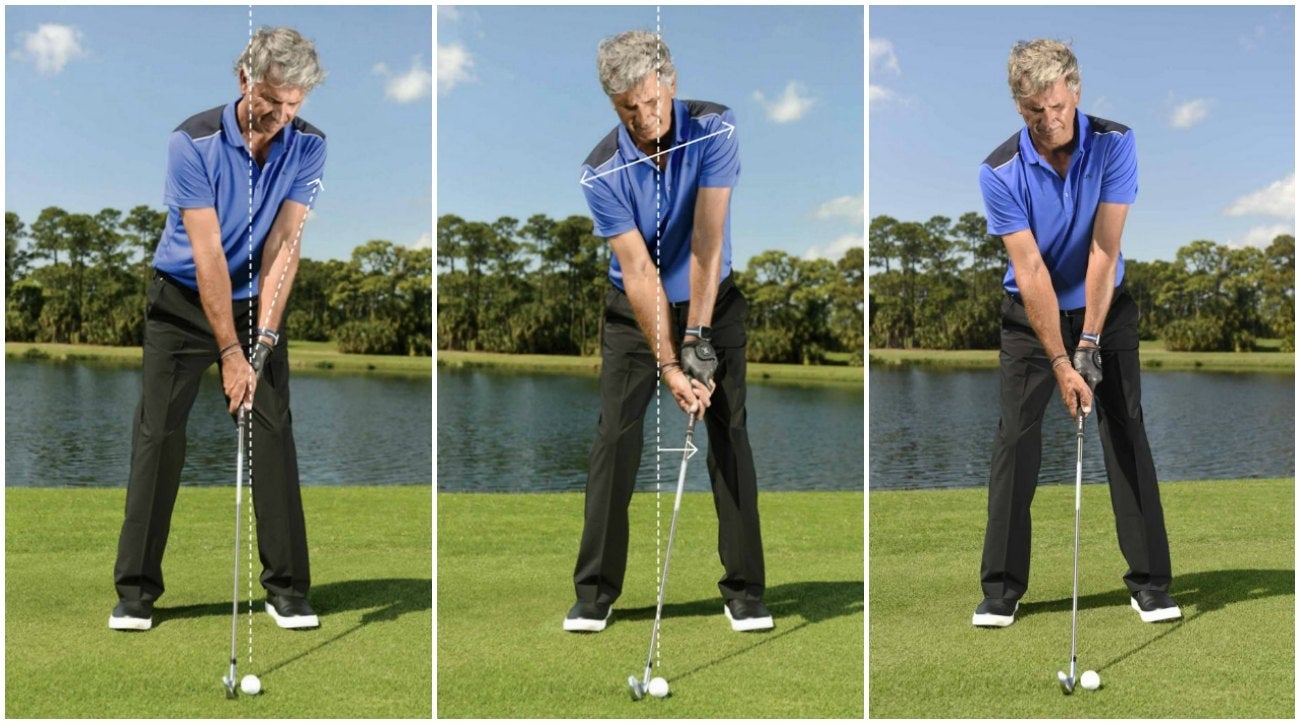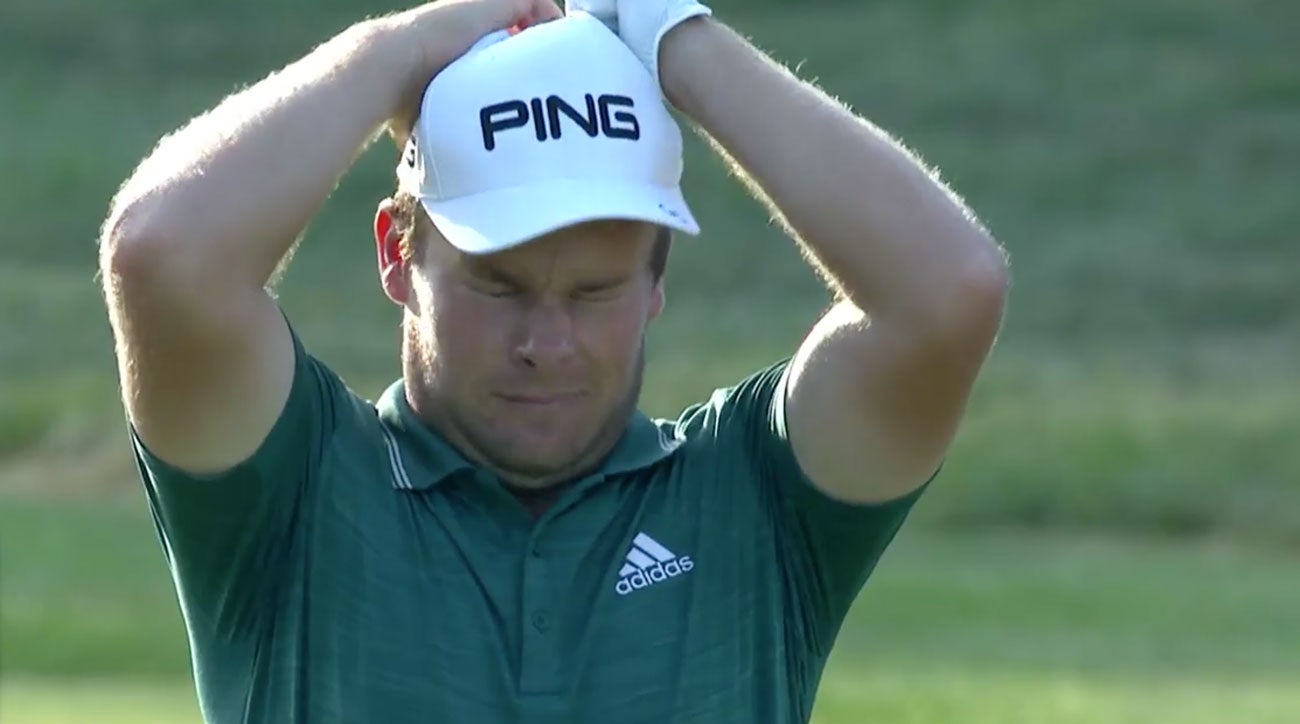10 reasons why your golf game is so inconsistent (and how to fix it)
- Share on Facebook
- Share on Twitter
- Share by Email

If you can self-diagnose what's happening when you mishit the ball, it will make you twice the golfer you currently are through practice alone.
Getty Images
One of the most common requests on my lesson tee is that my students would like to be more consistent. This certainly is a great goal and can lead to more enjoyable golf. Here are some reasons why you might not be as consistent as you would like and how to make the necessary adjustments to improve.

1. Inconsistent Set Up
Good posture is the key to balance and good solid contact. Being in proper posture for each and every club in your bag will almost always lead to being more consistent in contact and direction.
A good goal would be to be bent forward from your hips so your hands hang directly below your shoulders as your hands will return to where they hang naturally.
Having a set up routine that you repeat with each and every club is the key to this success.
One example might be to place your hands onto the grip of the club, step forward with your trailing foot as you bow from your hips to set your club behind the ball and aim it to the target.
Next, step your feet as many times as you need to adjust your proper distance from the end of your club to your body, get your proper ball position and align your body.
Having a set up routine like this can help you to get set up well with all of your clubs.
2. Club Face Issues
A square club face at impact can lead to great consistency levels and even if the contact isn’t perfect, oftentimes the miss is really straight. Playable misses can certainly lead to greater confidence.
A proper grip specific to you is the source of a square club face.
A club face that is overly open or closed will cause a golfer to have to make a compensation within their swing and these two wrongs that can occasionally make a right, will lead to inconsistency.
As an instructor, I know when I suggest a grip adjustment it is going to be uncomfortable, but I also know it will get the desired ball flight change really quickly. It is always interesting how the discomfort seems to be less once the ball flight is greatly improved.
3. Losing Balance
If you make your perfect golf swing and you lose your balance you could ruin a perfect golf shot.
I am often surprised that many golfers don’t realize they are off balance and are not able to hold their finish position. This is when I will record them to show the lack of balance. Try holding your finish until your golf ball stops moving. It may be more difficult than you think. The thought that you have “already hit the ball, so what difference does it make” mentality can get golfers into trouble.
If you are off balance at the finish of your swing, it is probably a sign that you are during your swing, too.

4. Clubs That Aren’t Forgiving Enough
Let’s be honest, most golfers do not find the center of the club face every time. Spray a little powder on the face of your club and you will quickly see that most golfers contact point moves around the face as we play.
That being the case, golf clubs that provide the most forgiveness can certainly be helpful. Even though I have been playing virtually my entire life, my present set of clubs is designed to be super forgiving and I will gladly take all the help I can get.
When you try that new club and it is the right one for you, it is beyond obvious.
5. Not Enough Practice Swings
You can carry up to 14 clubs in your bag and they are all a different length. That alone leads to insistency with many golfers. Taking a real practice swing allows you to get used to the length club you are swinging and if the ball is on the ground, also gives you the opportunity to have that club brush the grass.
What I often see with golfers who do not take practice swings is when they switch to a longer club, they often hit the ground too much or if they switch to a shorter club often hit a thin shot. This tells me that they have not been successful in adjusting to the changing length that happens continually throughout a round of golf.
I think a practice swing, unless you have a physical limitation, is worth the time invested, saves shots and leads to greater consistency in contact.
6. Not Hitting The Ground
If you don’t truly understand how a golf ball gets into the air, it can certainly lead to inconsistency. Many golfers come to the sport from another.
For example, a tennis player will contact the ball almost opposite to a golfer. Any golfer who incorrectly tries to “lift” the golf ball, will shy away from hitting the ground on their practice swing or even their real swing and some golfers don’t like the idea of making a mess on their practice swing.
In particular when your golf ball is on the ground, be willing to hit the ground on your practice swing and your real swing.

7. Not Working On Your Weaknesses
It certainly is a lot more fun to hit solid shots, but we all know that there are particular shots each of us may not like. Our weaknesses can show up during our competitive rounds or in more stressful situations.
If you can identify these when you play and where you don’t succeed, this should guide you to where the bulk of your lessons and practice time should be lazer-focused.
You might not want to stand out while you are struggling, but we have all been there. Find your golf instructor to work on your technique and seek to improve the weak points of your own golf game.
8. Not Practicing Smart
When you take the time to practice does it help you to build skill and confidence? I find many golfers aren’t even sure what or how long they should practice. Technique building practice would be more repetitive where you are trying to work through a change, and the feedback from the ball or outside aid will help you make this a habit.
Once your technique is reasonable, practice that mirrors on course play has proven to improve consistency. I often build practice plans for my students and if you aren’t sure what you should be doing, reach out to your instructor and they can give you some homework.
9. Bad Understanding Of Cause And Effect
Maybe you are consistent in that you make the same mistake over and over. Many golfers do and I am often surprised they don’t know or even ask what is causing the consistent miss.
First, you have to define the miss. What didn’t you like about your ball flight?
Second, what do you historically do that causes this miss?
Then make the adjustment.
It might look something like this: you hit your tee shot and you popped the ball up.
You wouldn’t like the ball flight being so high. You know your tendency is to have your ball position too centered and your shoulders not tilted back enough when you pop your driver up. You then make the adjustment, because you know your tendencies and make yourself better as you go throughout your round.

10. You overreact to a bad shot
Good golfers hit bad shots all of the time. While their miss may often be very playable, they typically go on with their round, adjust and move on. This is a lesson that all golfers can learn.
Try to under-react to your bad shots and just go get the ball and try again, or adjust your gameplan to be a little more conservative if you continue to struggle.
Remaining calm can help you make better decisions and help your shots stay in play. It is also makes you a golfer that others will enjoy.
Being more consistent does not mean being perfect and that is just the nature of this great game. We all know that it is more fun to play good golf, so find which one sounds most like you, and get to work fixing it!
Latest In Instruction

Golf.com









